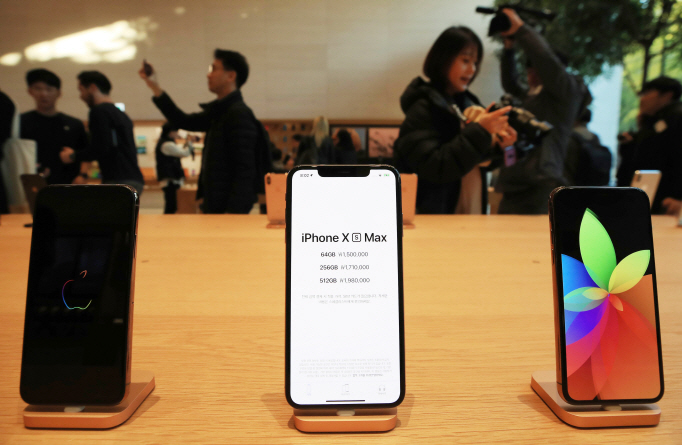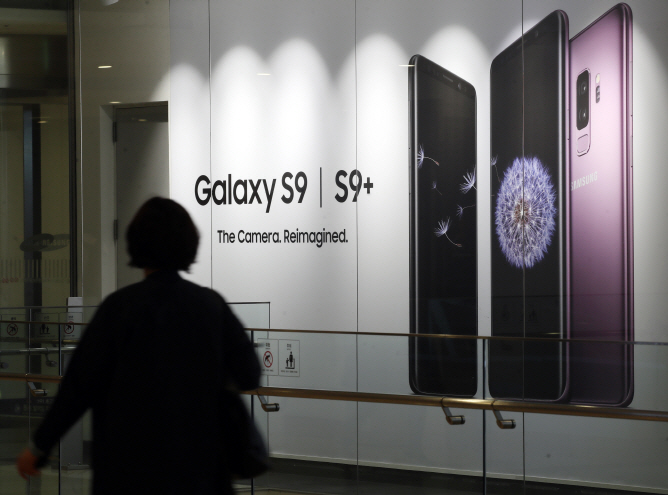
Shown in this photo taken Nov. 2, 2018, is the iPhone XS Max displayed at Apple’s Seoul-based shop in the affluent southern district of Gangnam. (Yonhap)
SEOUL, June 26 (Korea Bizwire) — Following Apple Inc.’s recent decision to support its newest smart device operating system, iOS 14, on older generation iPhone models dating back as far as six years, controversy has reemerged over Android smartphones, which have a shorter duration of technical support.
Consumers say that a flagship smartphone model costing more than 1 million won (US$833) should be supported longer than the current practice of two years.
Apple recently announced that iOS 14 will be supported on the newest iPhone 11 series as well as the iPhone 6S and the first generation of the iPhone SE.
The iPhone 6S was released in 2015, and the first generation of the iPhone SE has been around for five years.
Apple has been maintaining a policy to support its latest iOS on iPhones up to six years old, which has prompted Android smartphone users to complain about Android OS’s shorter period of technical support.
Technical support for Android, while varying by smartphone model, typically expires after around two years.
Samsung Electronics Co.’s Galaxy S9, released in 2018, received an update for the latest Android 10 this year. However, it is likely to be excluded from an Android 11 update scheduled for release later this year.
Galaxy S8, released a year before the S9, was cut off from Android updates after Android 9.
Samsung and other smartphone producers using Android are offering operating system updates for only two years.
While it may be difficult to compare an iPhone, a costly, high-end model produced in smaller numbers with an Android phone, most of which are lower-end, cheaper models aiming at the mass market, consumers still complain that the four-year gap between iPhone and Android support is too big to ignore.
The problem becomes even more striking when high-end Android smartphones, such as Samsung’s Galaxy series – which cost as much as iPhones – only offer OS updates for two years.
The recent trend of better smartphone specifications and three years of average phone use before getting a new model further corroborates consumer complaints.
Samsung Electronics and LG Electronics both decided to extend warranty coverage to two years, from the previous policy of one year, for all smartphones sold in South Korea starting this year.
Smartphone producers, however, argue that Apple and Android should not be compared as two equivalents, since standard updates for Android are more difficult to come by since it is an open-source operating system that constantly faces standardization issues for various apps and devices.
iOS, on the other hand, is a closed-source operating system, with Apple solely in charge of the development and support of the operating system.
Google’s responsibility over Android is mainly limited to its development. When it comes to updates, the responsibility falls on each Android smartphone manufacturer.
“Android faces a problem that is inherent in the cooperative system between Google and phone manufacturers,” said a source familiar with the industry.
“We aren’t even sure if forcing a new update on older models will work. It’s not just updates we need. We need actual technical support.”
H. M. Kang (hmkang@koreabizwire.com)







